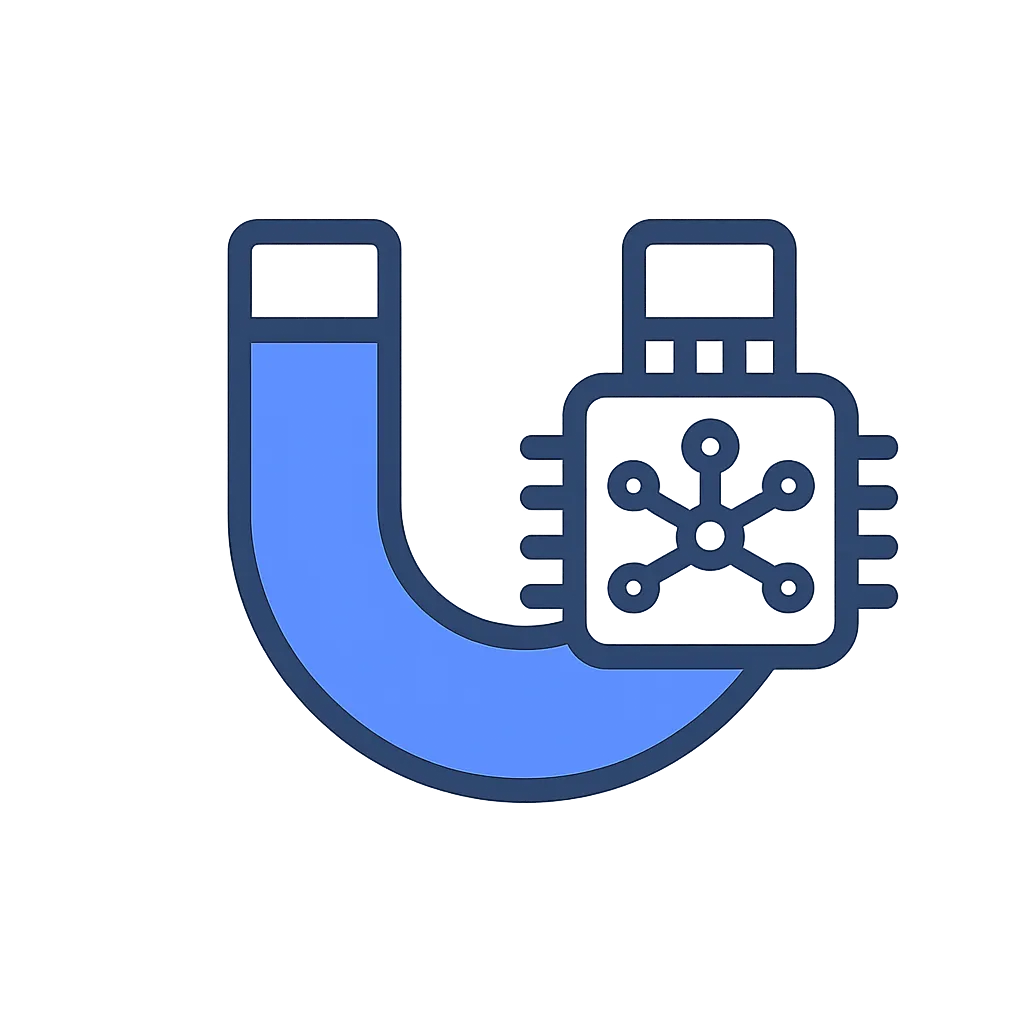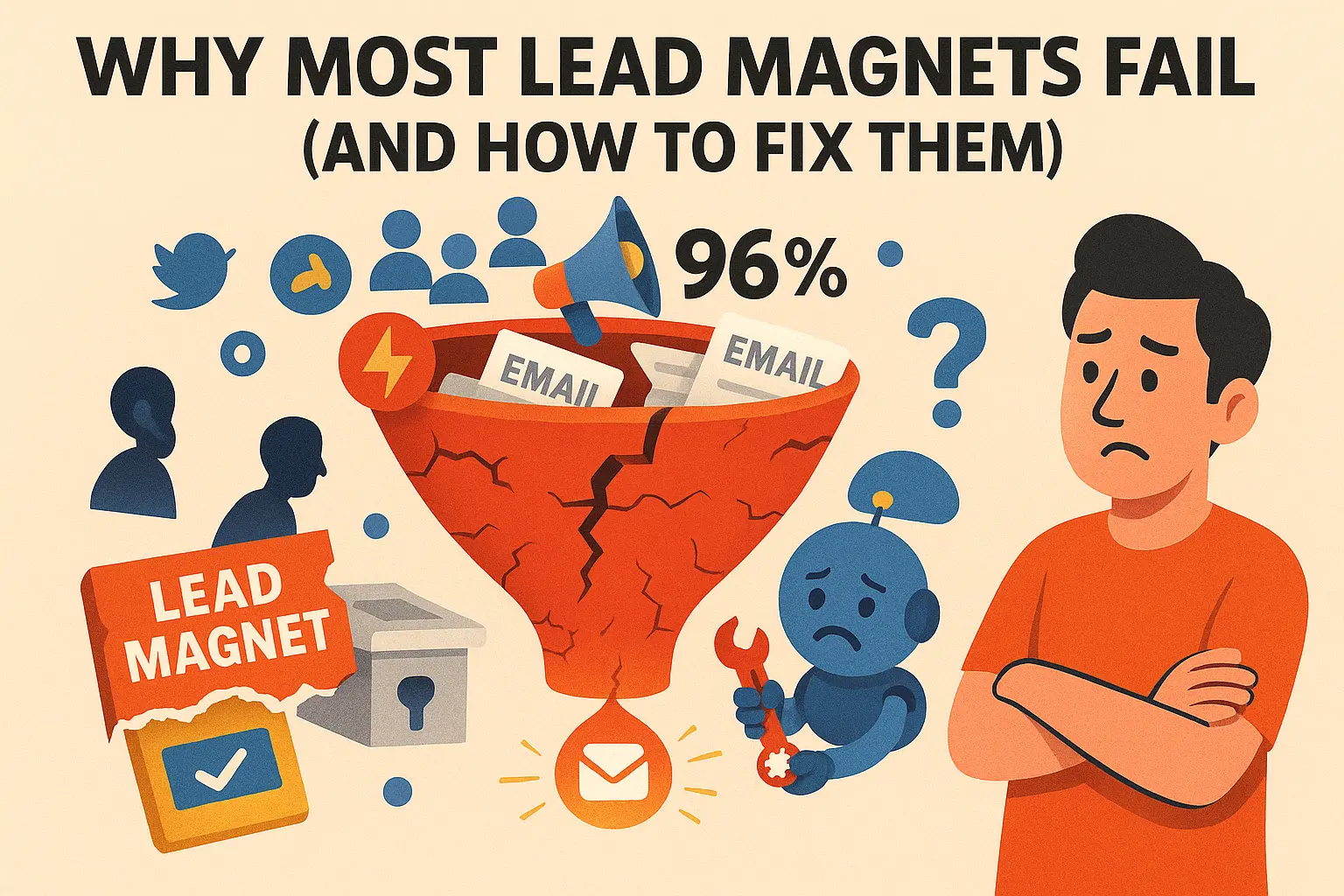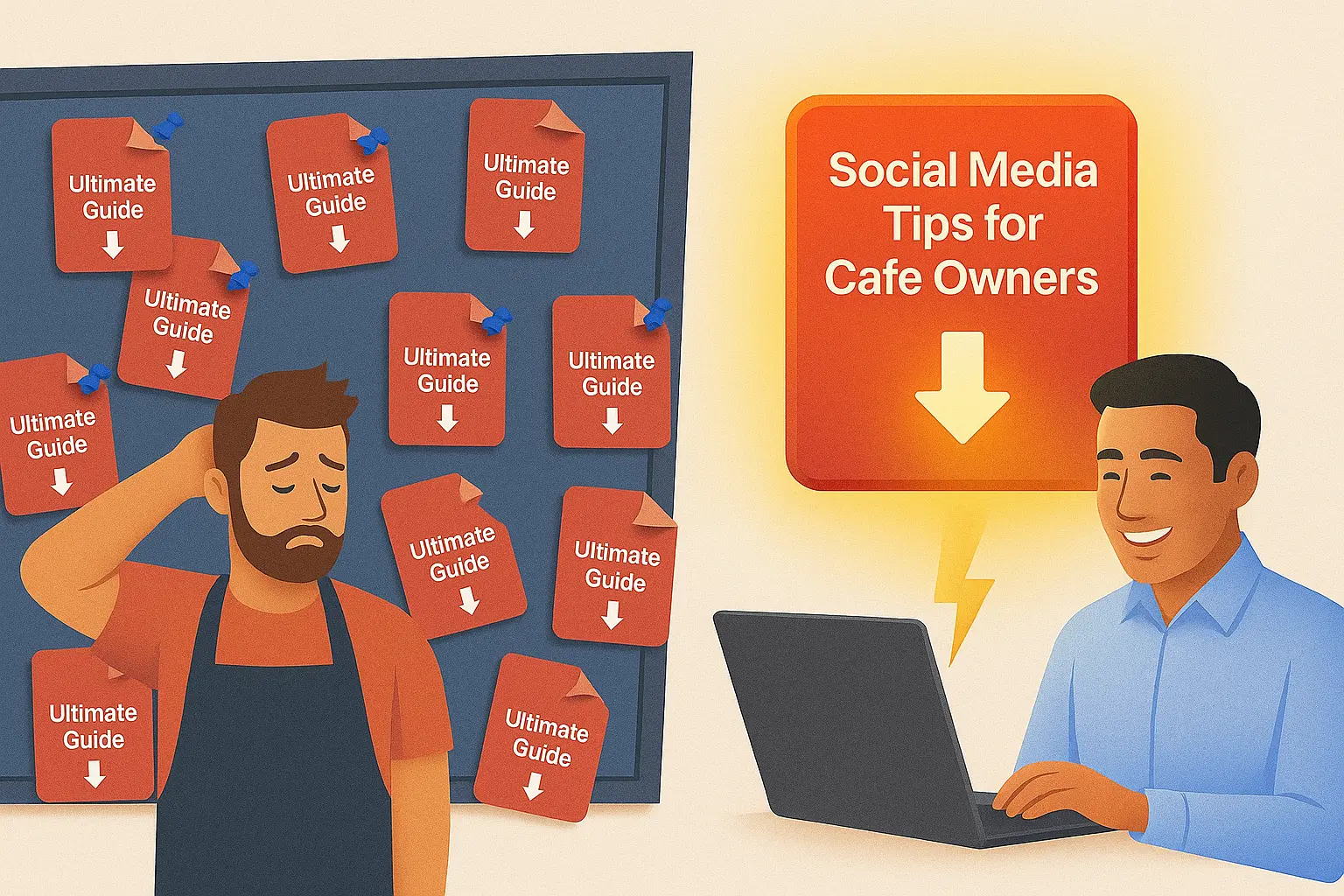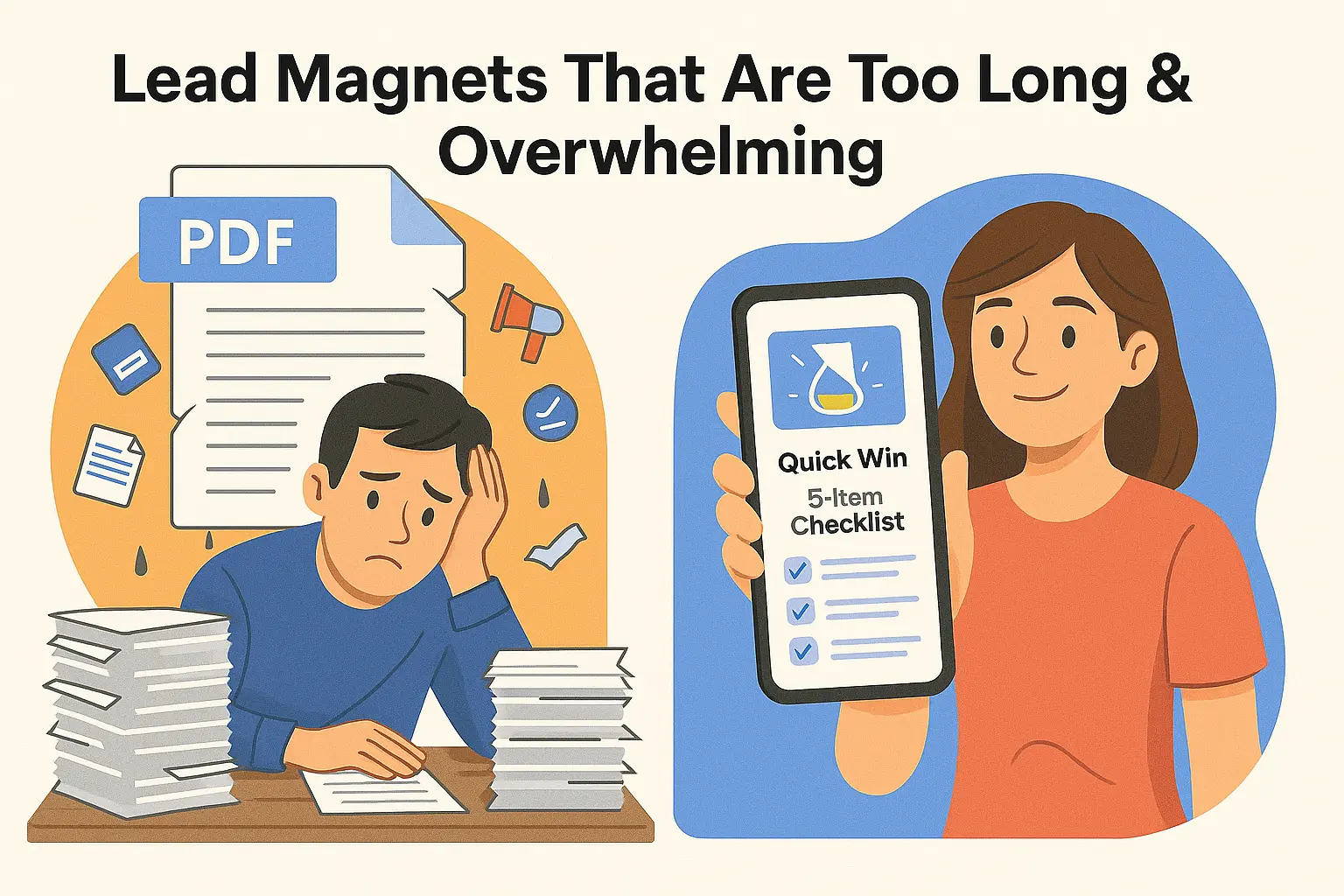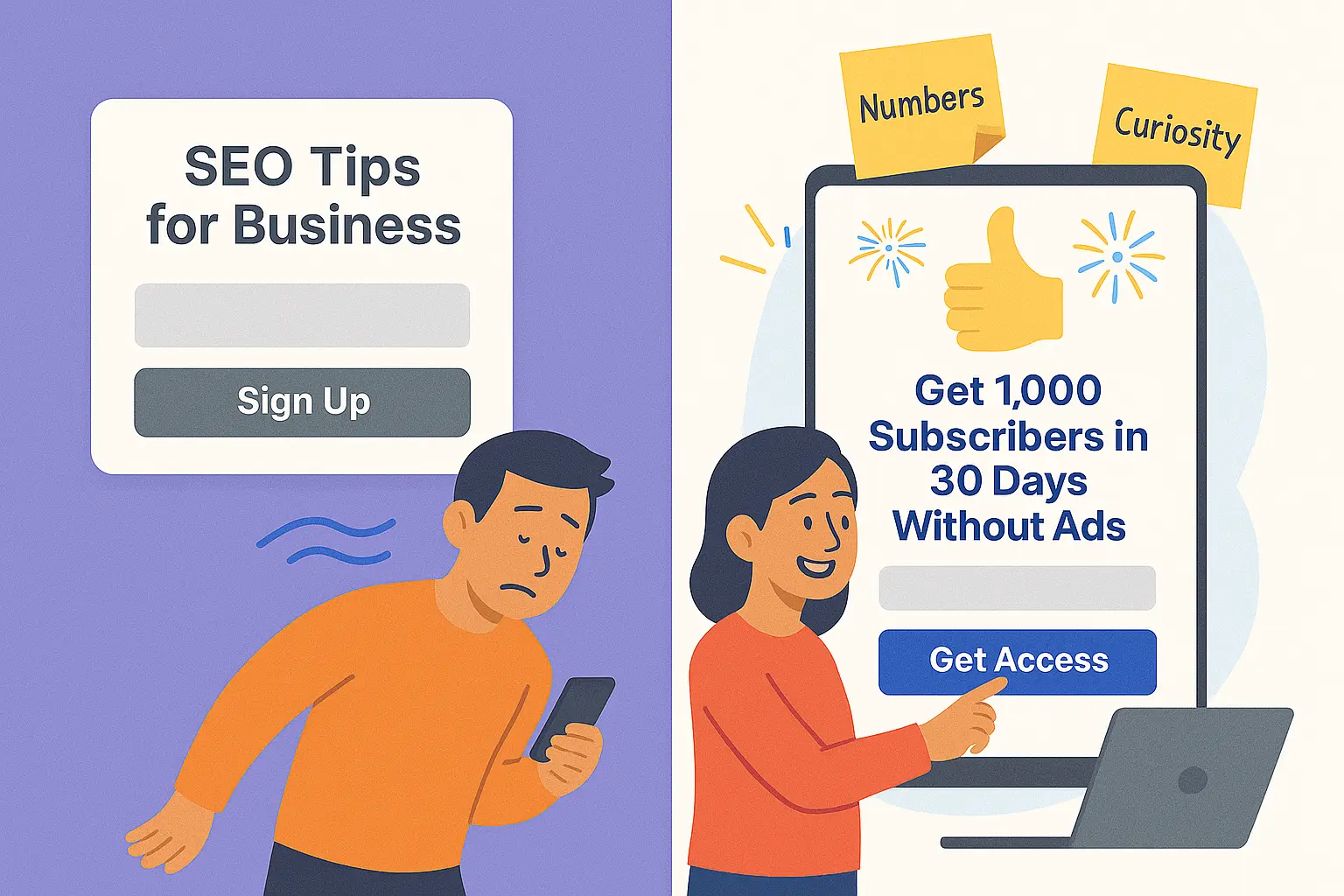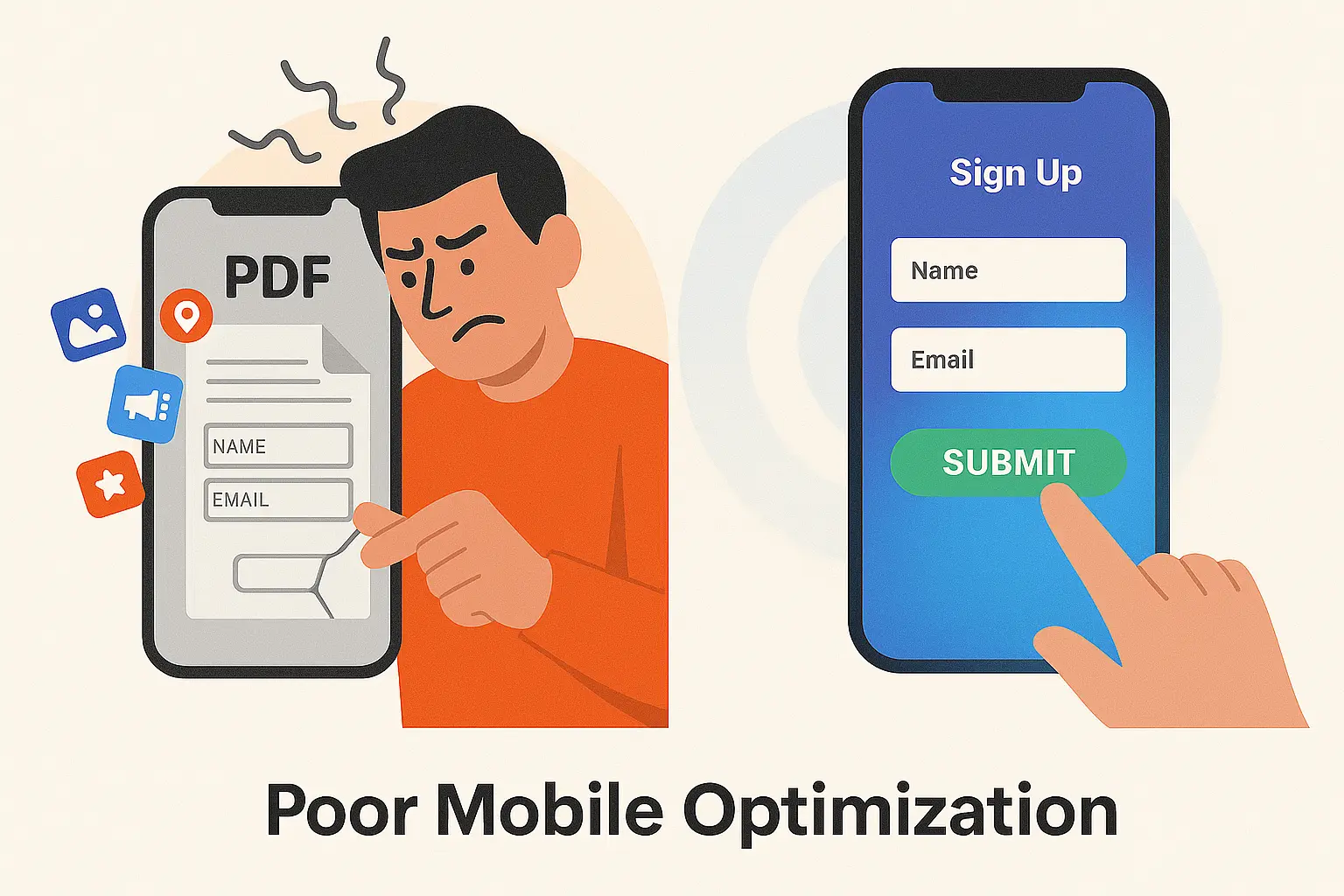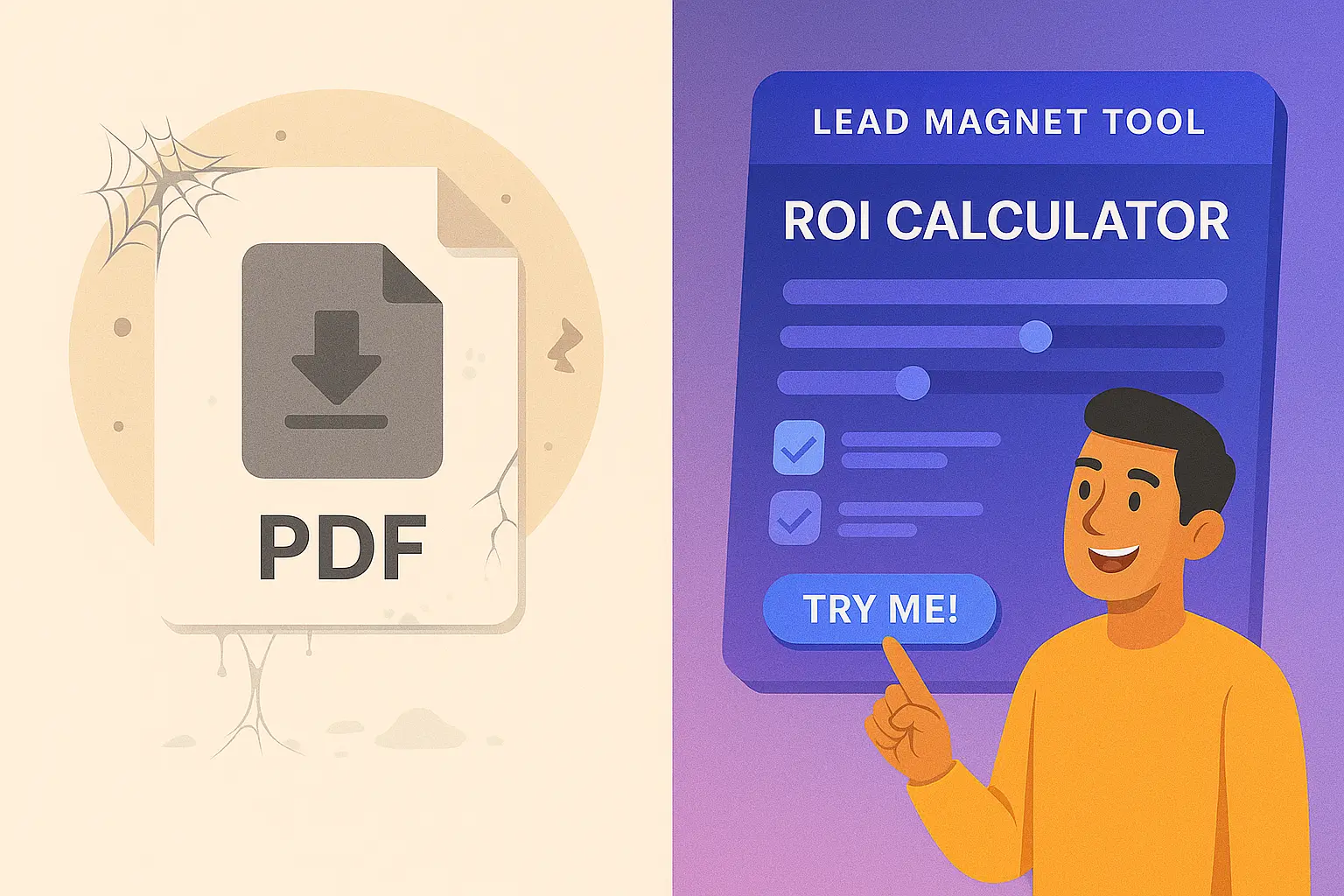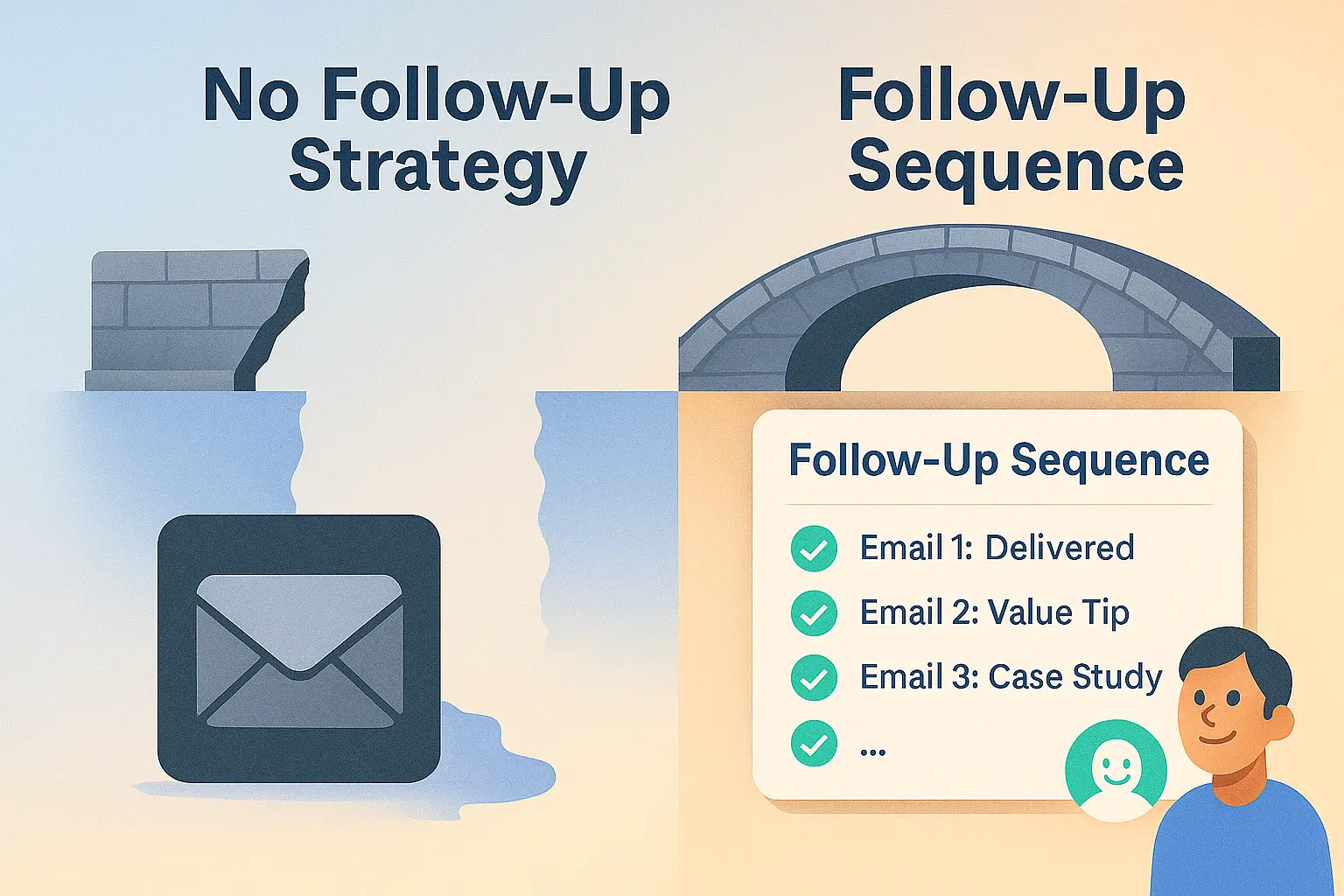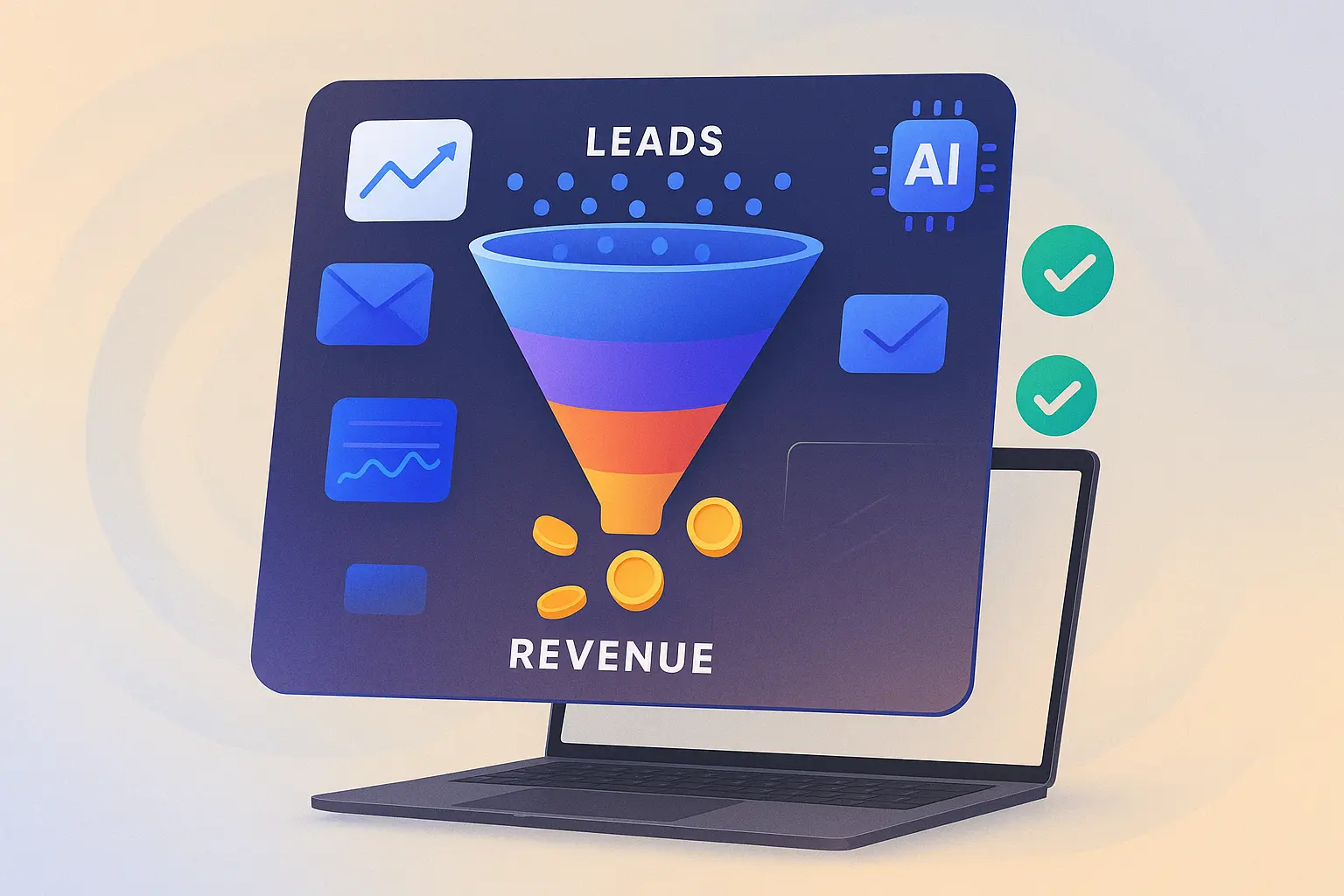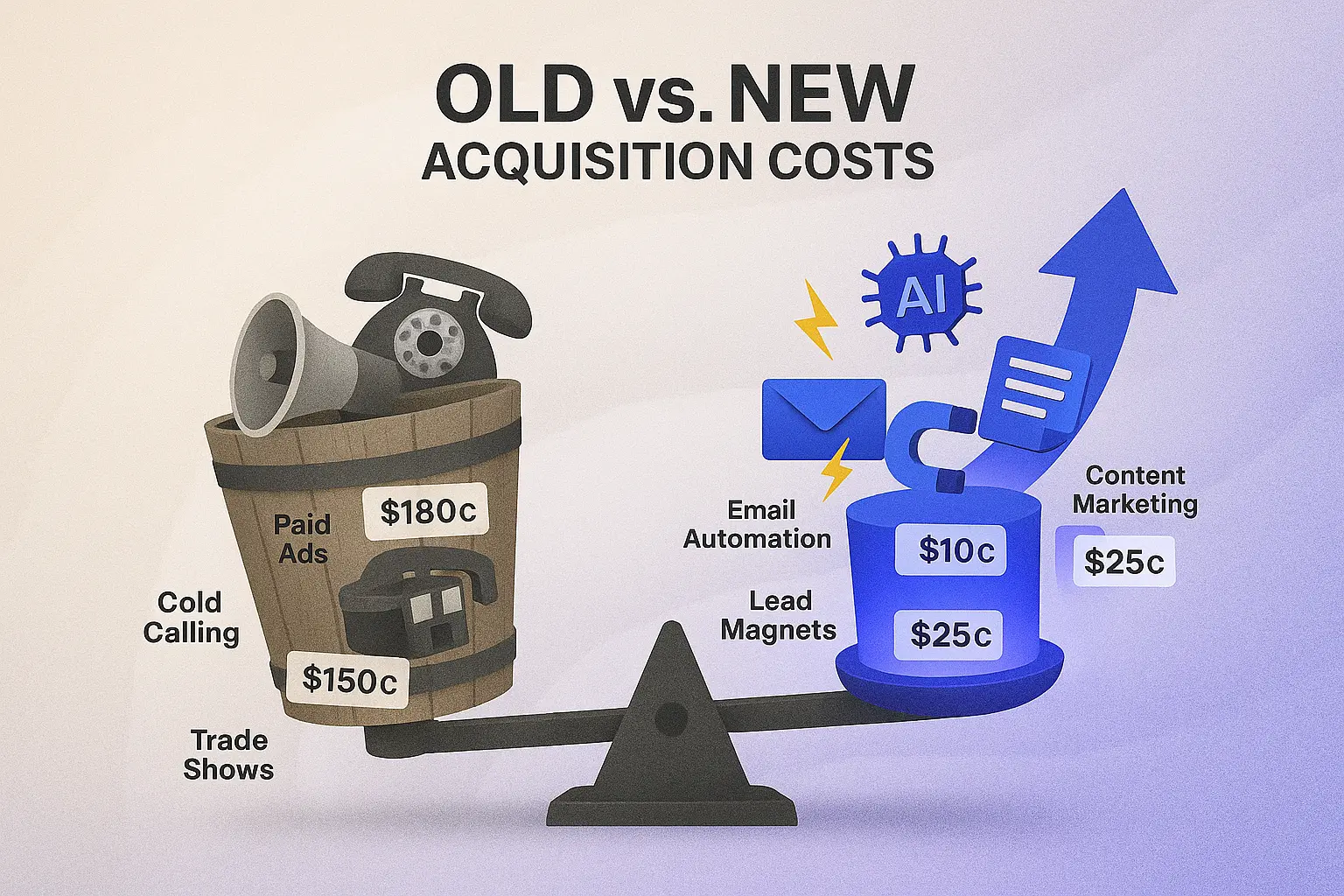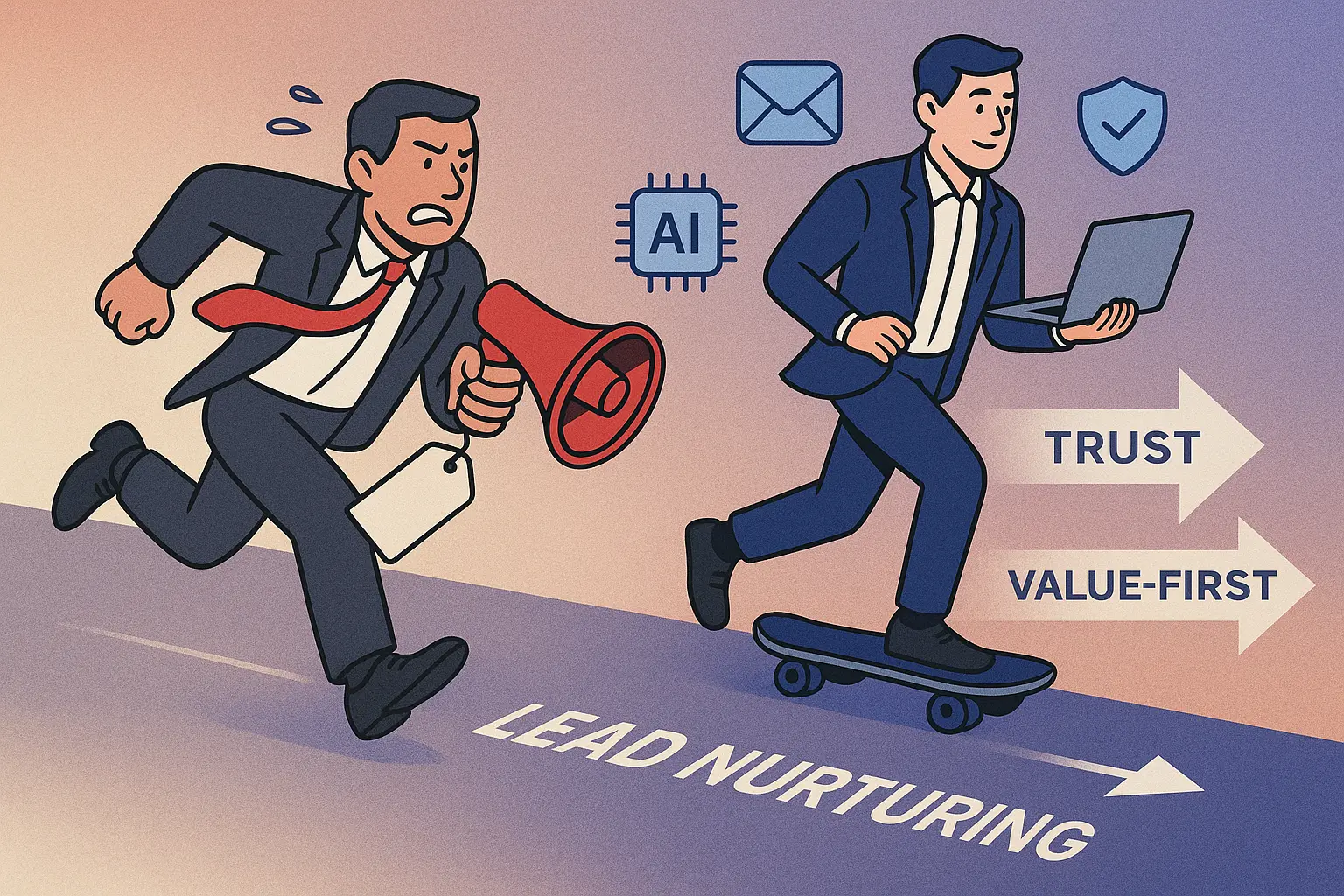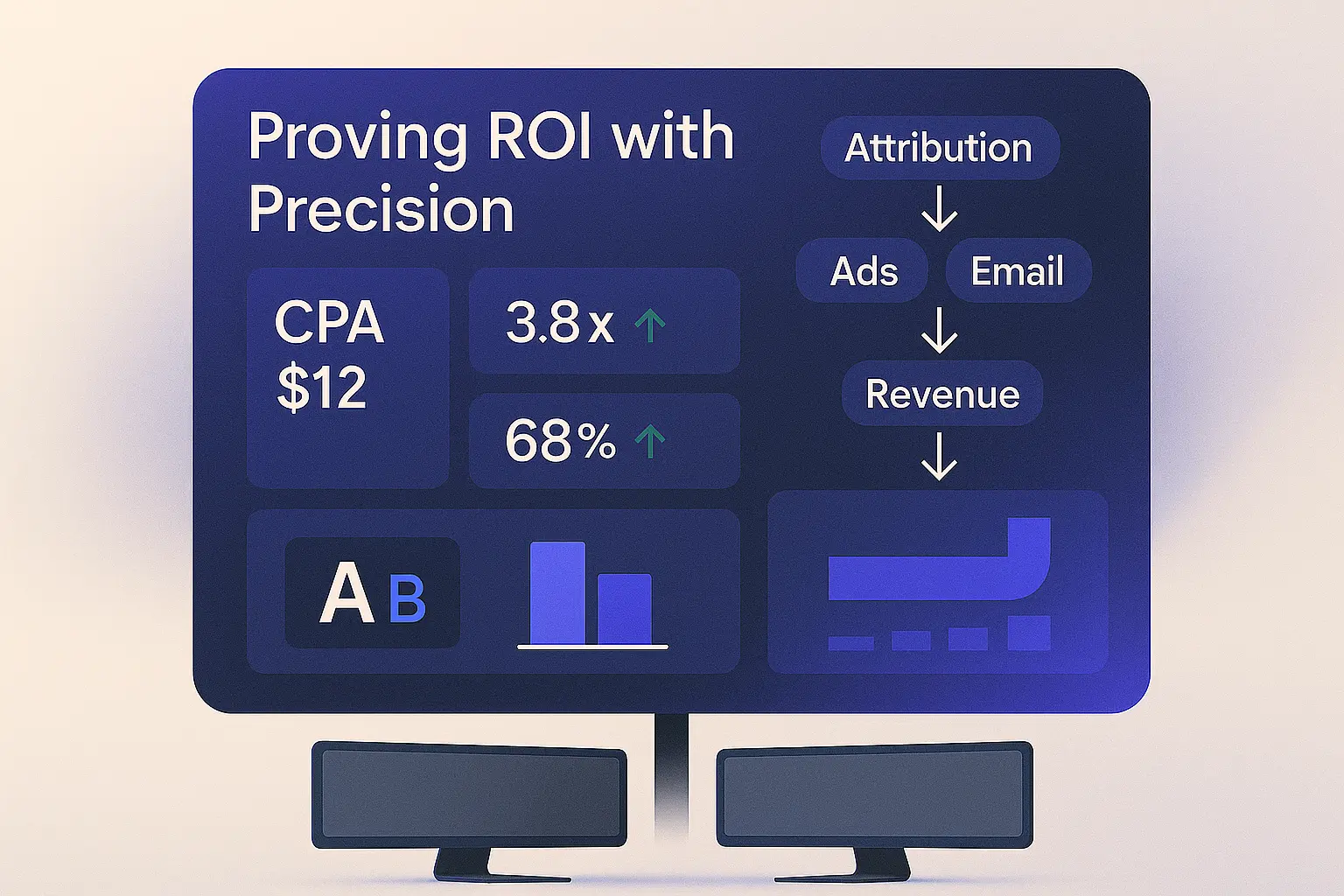The Psychology Behind Lead Magnets. How to Trigger Action and Build Trust
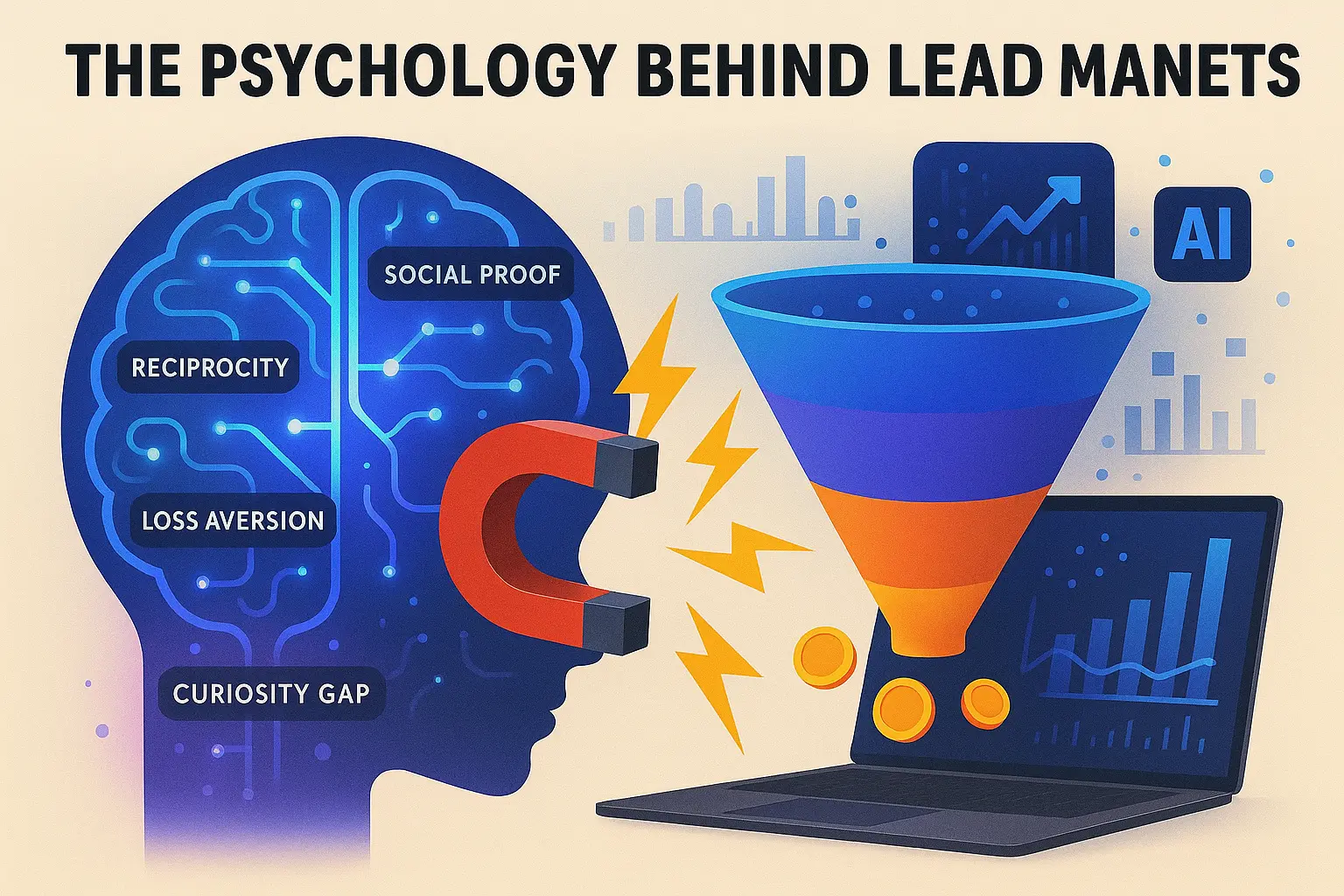
Ever wonder why some lead magnets generate thousands of subscribers while others barely get a second glance? The answer lies deep within human psychology.
According to HubSpot, companies using psychology-driven lead magnets see conversion rates up to 266% higher than those relying on generic offerings (HubSpot, 2024). We’re hardwired to respond to certain psychological triggers, and smart marketers know exactly which buttons to push!
From the fear of missing out to our innate desire for instant gratification, understanding these mental mechanisms can transform your lead generation strategy. Ready to dive into the fascinating world of consumer psychology and discover how to create irresistible lead magnets that your audience simply can’t ignore?
The Fundamental Psychology of Value Exchange
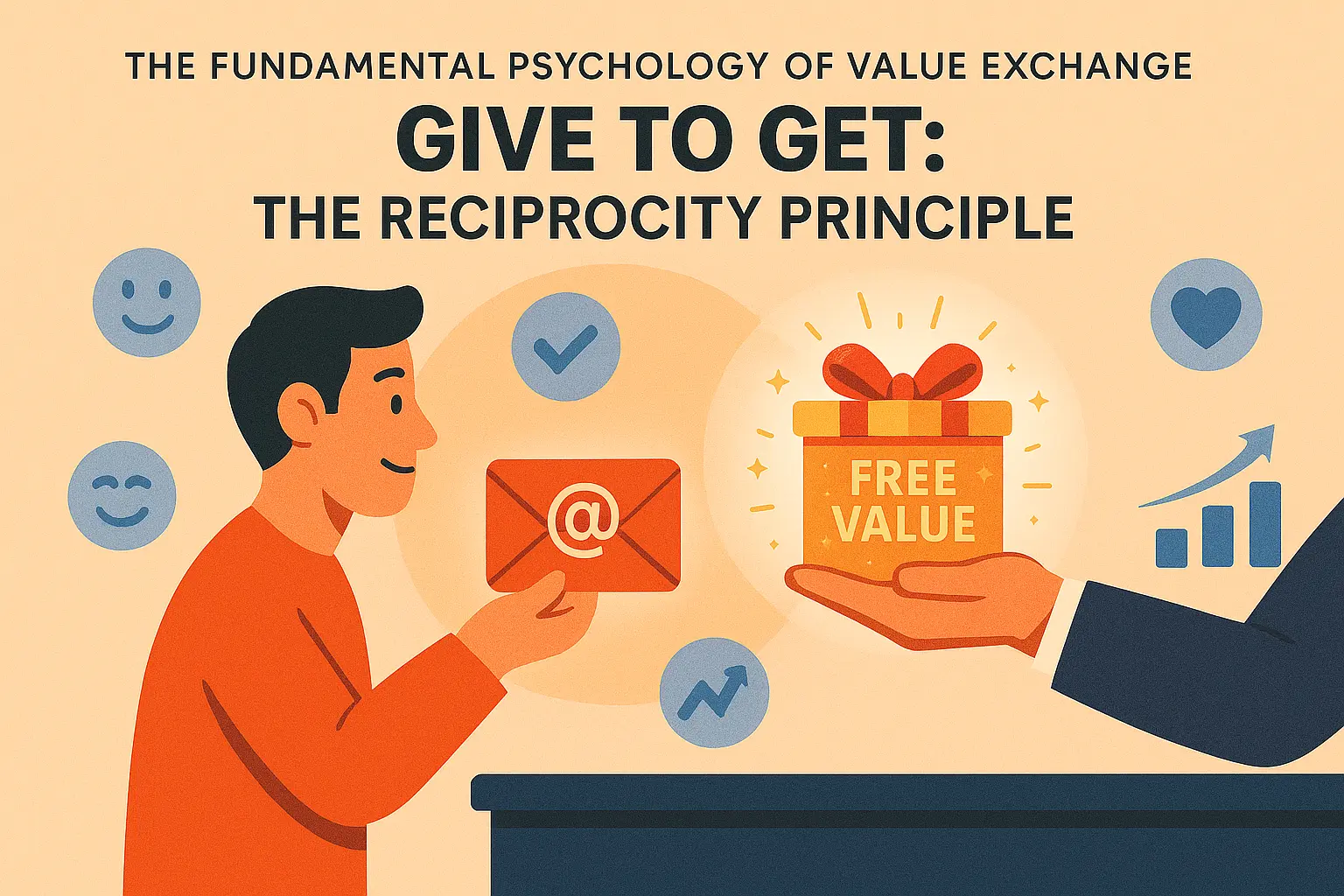
Let’s be honest – we’ve all fallen for it. That perfectly crafted lead magnet that made us think, “I absolutely NEED this right now!” The magic behind these conversions? The reciprocity principle is at work, employing its psychological wizardry.
When we provide genuine value upfront, people feel psychologically obligated to reciprocate. This behavioural trigger taps into our deep-seated social conditioning, where receiving something valuable creates an almost unconscious urge to give something back in return.
The Psychology of Perceived Value
The challenge lies in understanding how perceived value impacts conversion decisions. We’ve seen this play out countless times – a simple PDF checklist can outperform an elaborate video course if it solves an immediate problem.
Quick Pro Tip: Your lead magnet’s value isn’t determined by how much work you put into it, but by how quickly it moves your audience toward their desired outcome.
Here are the key factors that influence perceived value:
- Immediate applicability – Can they use it today?
- Specificity – Does it address their exact pain point?
- Effort required – How much work is needed to see results?
- Social validation – Are others getting value from it?
Social proof psychology plays an equally vital role in establishing trust and credibility. When visitors see that others have benefited from your offering, it triggers the bandwagon effect marketing principle.
Building Trust Through Social Validation
We’ve noticed something fascinating: testimonials mentioning specific results perform 73% better than generic praise (ConversionXL, 2024). Download counts, user-generated content, and success stories all contribute to social validation that reduces psychological barriers to conversion.
The reality check: People don’t just want your lead magnet - they want to feel smart for choosing it. They’re looking for confirmation that they’re making the right decision.
Cognitive Biases That Drive Lead Magnet Success
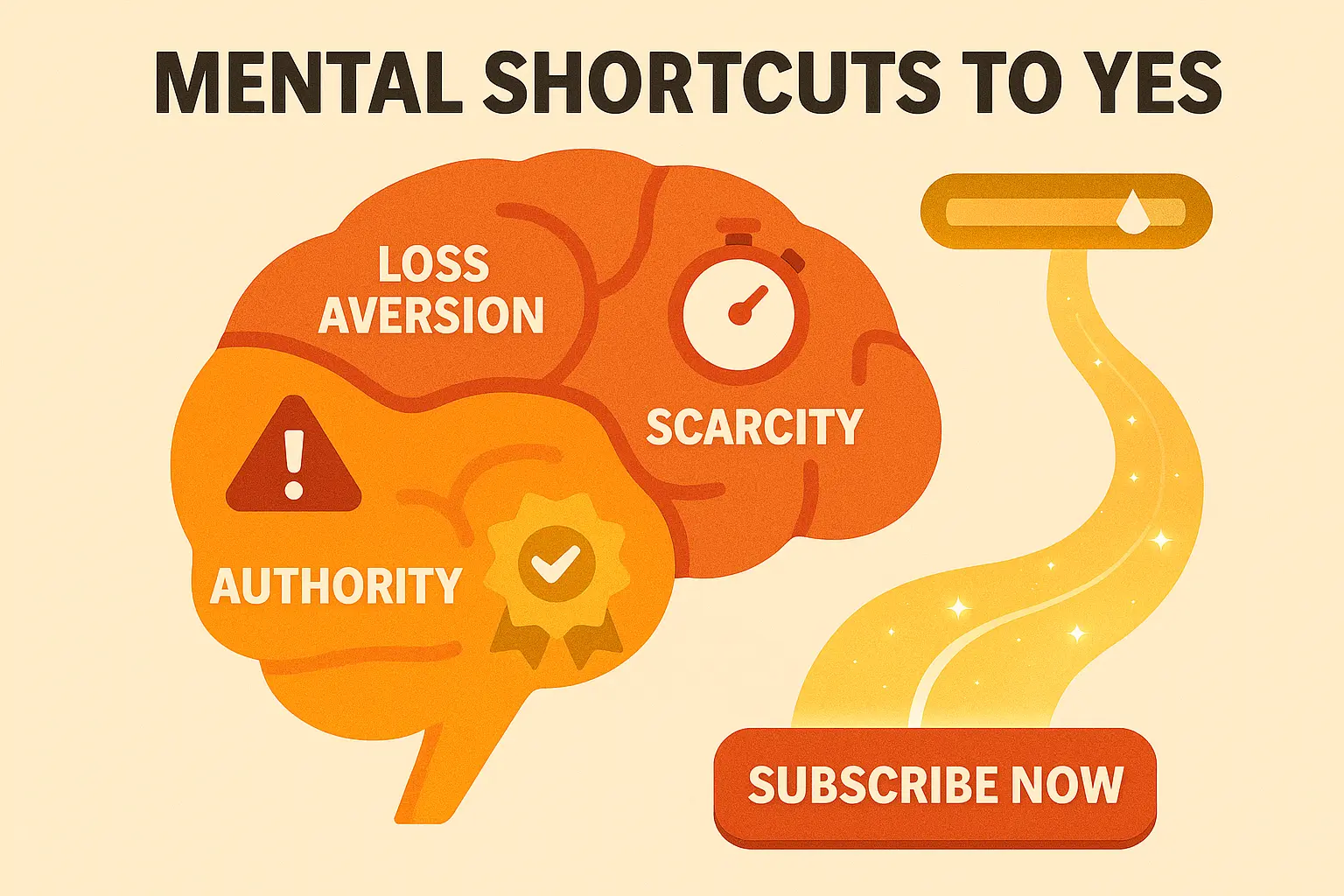
Loss aversion marketing reveals that people are twice as motivated to avoid losing something as they are to gain something equivalent. This isn’t just theory – it’s a measurable reality that’s been validated by countless A/B tests.
The Power of Loss Aversion
Here’s what this means for your lead magnets: framing around preventing mistakes or avoiding pitfalls often outperforms those promising gains by 40-60% (Nielsen Norman Group, 2023).
Examples that work:
- “5 Critical Mistakes That Kill Your Blog Traffic”
- “Why 90% of Lead Magnets Fail (And How to Avoid It)”
- “The Hidden Conversion Killers Destroying Your Sales”
The scarcity marketing psychology principle creates a sense of urgency without being pushy. Limited-time offers, exclusive access, or capped availability all trigger the fear of missing out marketing response.
Authority and Expertise Positioning
Authority principle marketing positions you as the expert worth following. When your lead magnet demonstrates expertise through specific insights, case studies, or proprietary methodologies, it triggers authority bias that makes people more likely to trust your recommendations.
Pro tip: Include specific metrics, case study results, or behind-the-scenes insights that only an expert would know. Numbers like “increased conversions by 247%” carry more weight than “dramatically improved results.”
Confirmation bias marketing suggests that people gravitate toward information that validates their existing beliefs. Successful lead magnets often reinforce what your audience already suspects while providing new frameworks to act on those beliefs.
Avoiding Decision Paralysis
Perhaps most importantly, the paradox of choice reveals why too many options kill conversions. Decision-making psychology reveals that cognitive overload can lead to decision paralysis.
The fix: Instead of overwhelming visitors with multiple generic offers, create targeted AI tools that solve specific problems for different audience segments. Each blog post can have its customised lead magnet, reducing cognitive load while maximising relevance.
Emotional Triggers That Convert Visitors Into Subscribers

Emotional marketing triggers drive decisions far more than rational analysis – and we’ve got the data to prove it. According to the Institute of Neuroscience & Marketing, emotional response to ads has 3 times more influence on buying decisions than the actual content (2024).
Fear-based motivations address pain points effectively, but they must be balanced with hope and actionable solutions. The psychology behind this approach taps into our survival instincts while providing a clear path forward.
Tapping Into Aspirational Psychology
Aspiration psychology works by connecting your lead magnet to your audience’s desired future state. When people can visualise themselves achieving their goals using your resource, it triggers emotional decision making that bypasses analytical resistance.
What we’ve learned: Lead magnets that paint a vivid picture of the “after state” convert 2.3x better than those focusing solely on features or benefits.
Effective aspiration triggers include:
- “Finally achieve the [desired outcome] you’ve been dreaming about”
- “Join the [number] successful [target audience] who’ve already transformed their [area]”
- “Stop struggling with [pain point] and start enjoying [benefit]“
The Curiosity Gap Psychology
Curiosity gaps leverage incomplete information to create psychological tension. Our brains are wired to seek closure – when information feels incomplete, we’re compelled to fill in the gaps.
The secret sauce: Reveal just enough to demonstrate value while leaving the most valuable insights behind the email gate. Think of it as showing the trailer, not the whole movie.
Instant Gratification vs Long-term Value
Here’s where things get tricky. Instant gratification psychology suggests people want immediate results, but behavioural economics marketing shows that perceived long-term value often wins the conversion battle.
The sweet spot: Lead magnets that provide immediate wins while promising bigger transformations. Think of quick implementation with substantial results.
Pro tip: Include timestamps like “Get results in 15 minutes” or “See improvements within 24 hours” to satisfy the instant gratification craving.
The Psychology of Trust and Credibility Building
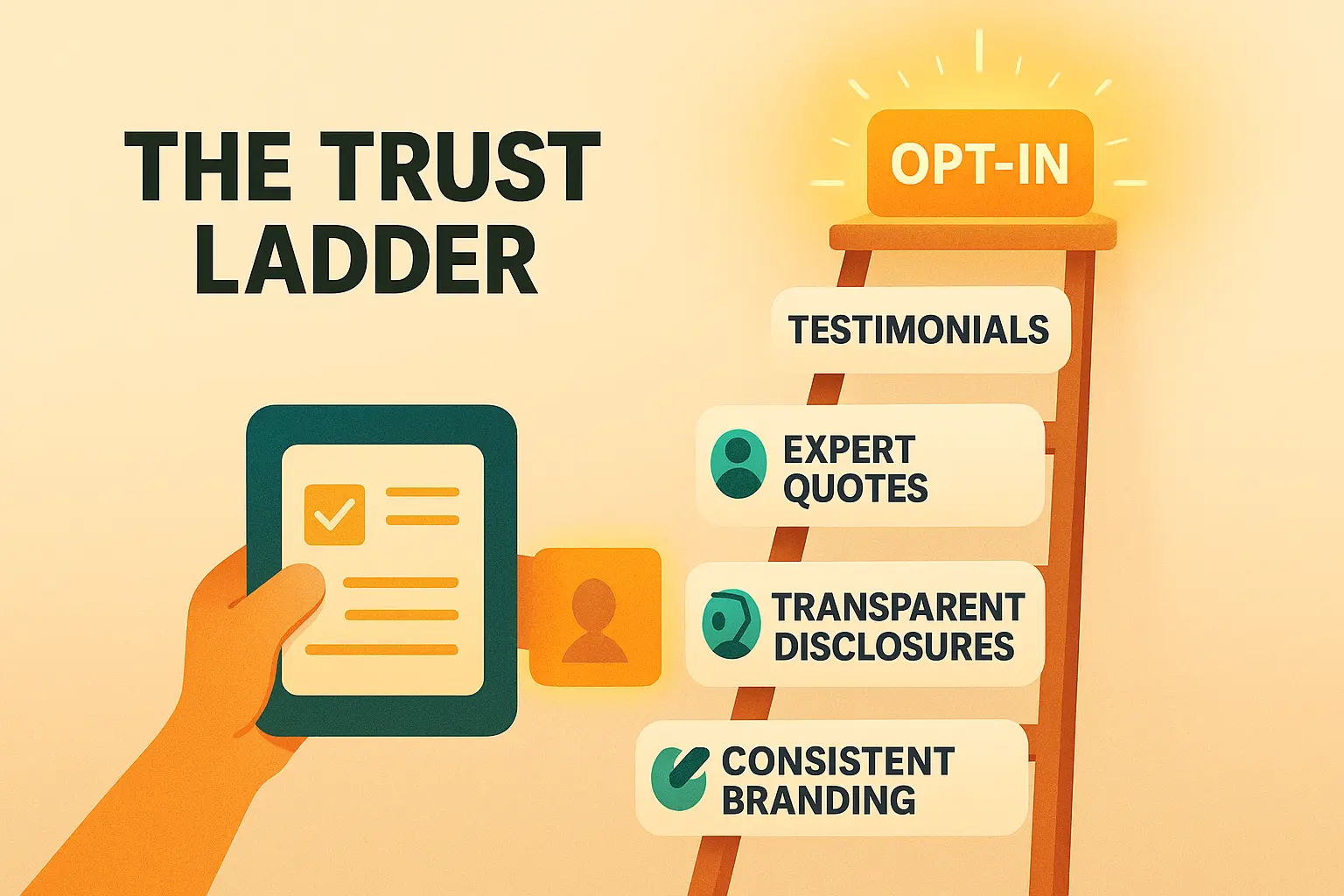
First impressions are formed within 50 milliseconds of viewing a website (Google Research, 2024). That’s faster than a blink! This halo effect in digital interactions means your lead magnet’s presentation carries enormous psychological weight.
We’ve discovered that trust-building psychology isn’t just about what you say – it’s about how quickly you prove your credibility. Modern consumers have been burned by too many overpromised, under-delivered lead magnets.
The Authenticity Factor
Transparency psychology reveals why authenticity matters more than perfection. People are drawn to genuine expertise over polished marketing speak. Admitting limitations or sharing failures often builds more trust than highlighting only successes.
What works:
- Behind-the-scenes insights into your process
- Honest discussions about what doesn’t work
- Specific details that only an expert would know
- Personal anecdotes that humanise your expertise
The mere exposure effect demonstrates that establishing familiarity through consistent branding enhances trust levels. This isn’t about logo placement – it’s about creating psychological comfort through predictable, reliable experiences.
Social Validation Strategies
Social validation through testimonials and user-generated content taps into our fundamental need for social acceptance. But here’s what most people get wrong: generic testimonials are essentially useless.
High-converting social proof includes:
- Specific results with timeframes
- Before-and-after transformations
- Industry or demographic relevance
- Verifiable details that feel authentic
Risk Reversal Psychology
Risk reversal psychology reduces perceived barriers to entry by addressing the “what if this doesn’t work” concern. Even with free lead magnets, people invest time and attention, resources they want to protect.
Effective risk reversal techniques:
- Clear expectations about time investment
- Honest assessments of who this will/won’t help
- Multiple formats to accommodate different learning styles
- Follow-up sequences that continue delivering value
The breakthrough insight: When people feel safe to engage without judgment, conversion rates increase by an average of 187% (ConversionXL, 2023).
Psychological Principles of Effective Lead Magnet Design
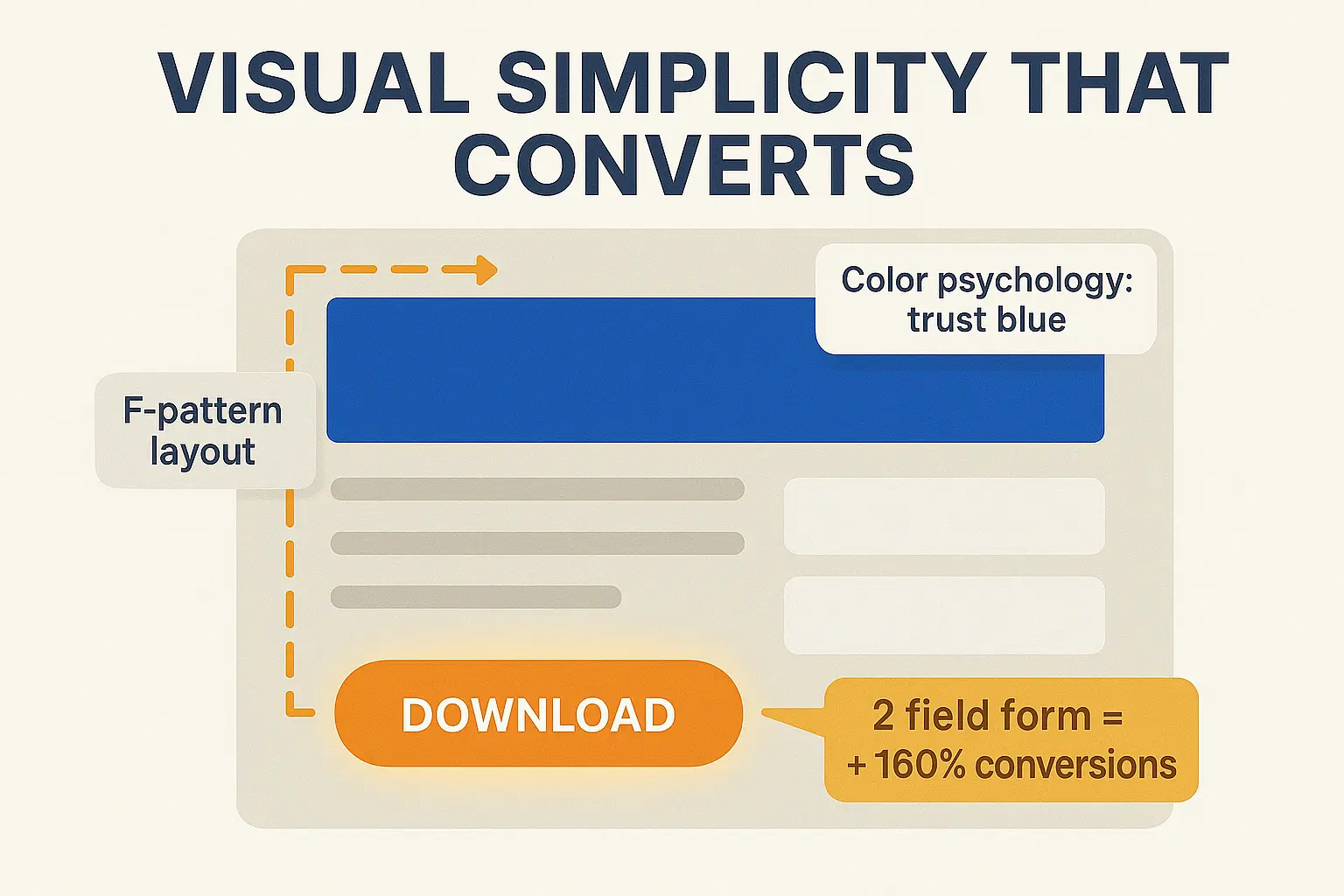
Visual psychology We process visual information 60,000 times faster than text (3M Corporation, 2024), which means your lead magnet’s visual presentation literally shapes the conversion decision.
Cognitive load theory reveals why keeping things simple dramatically improves conversions. Every additional element on your page increases the mental effort required to make a decision.
The Psychology of Colour and Conversion
Colour psychology conversions data shows that the right colour choices can increase conversions by up to 24% (HubSpot, 2024). But here’s the catch – colour effectiveness depends heavily on context and audience expectations.
High-converting colour strategies:
- Red: Creates urgency and excitement (great for limited-time offers)
- Blue: Builds trust and stability (perfect for B2B audiences)
- Green: Suggests growth and positive outcomes (ideal for improvement-focused offers)
- Orange: Balances urgency with friendliness (works well for creative audiences)
F-Pattern Reading and Eye Movement
F-pattern reading behaviour Research shows that people scan content in a predictable pattern. Understanding this user behaviour analysis helps optimise lead magnet placement for maximum visibility.
Strategic placement zones:
- The top-left quadrant gets the most attention
- Left margin scanning captures secondary focus
- Bottom-left area works for final conversion pushes
Mobile psychology completely changes these patterns. On mobile devices, decision-making psychology operates under different constraints – smaller screens, touch interactions, and often distracted environments.
Reducing Cognitive Load
The reality: Every design choice either helps or hurts conversion. Cluttered layouts, confusing navigation, and unclear value propositions all increase cognitive load, making it harder for people to say yes.
Simplified design principles that work:
- One clear call-to-action per page
- Plenty of white space around key elements
- Scannable headlines that communicate value instantly
- Form fields that feel reasonable, not invasive
Leveraging AI Psychology for Personalised Lead Magnets

Personalisation psychology reveals something fascinating: when content feels specifically created for us, our brains light up the same reward centres activated by receiving unexpected gifts (Stanford Research, 2024).
The challenge: Creating truly personalised experiences at scale has traditionally required massive resources and technical expertise. That’s where AI-powered tools change the game completely.
The Psychology of Individual Relevance
Behavioural psychology marketing shows that personalised content performs 42% better than generic alternatives (Salesforce, 2024). However, personalisation extends beyond inserting someone’s name in an email.
True personalisation addresses:
- Specific pain points based on behaviour
- Industry or demographic relevance
- Current stage in the customer journey
- Preferred content formats and communication styles
AI psychology leverages machine learning algorithms to identify patterns in user behaviour analysis that humans might miss. These systems can automatically adjust messaging, design elements, and even content structure based on real-time visitor behaviour.
Interactive vs Static Content Psychology
The breakthrough insight: Interactive content generates 4.7x more engagement than static alternatives (Content Marketing Institute, 2024). Interactive lead magnets tap into motivation psychology marketing by making people active participants rather than passive consumers.
High-engagement interactive formats:
- Personalised assessments and quizzes
- Dynamic calculators and planning tools
- Customised recommendation engines
- Progressive profiling that builds value over time
The psychological advantage: When people invest effort in creating their results, they value the outcome more highly. This psychological ownership effect increases both conversion rates and long-term engagement.
The Psychology of Timing and Context in Lead Generation
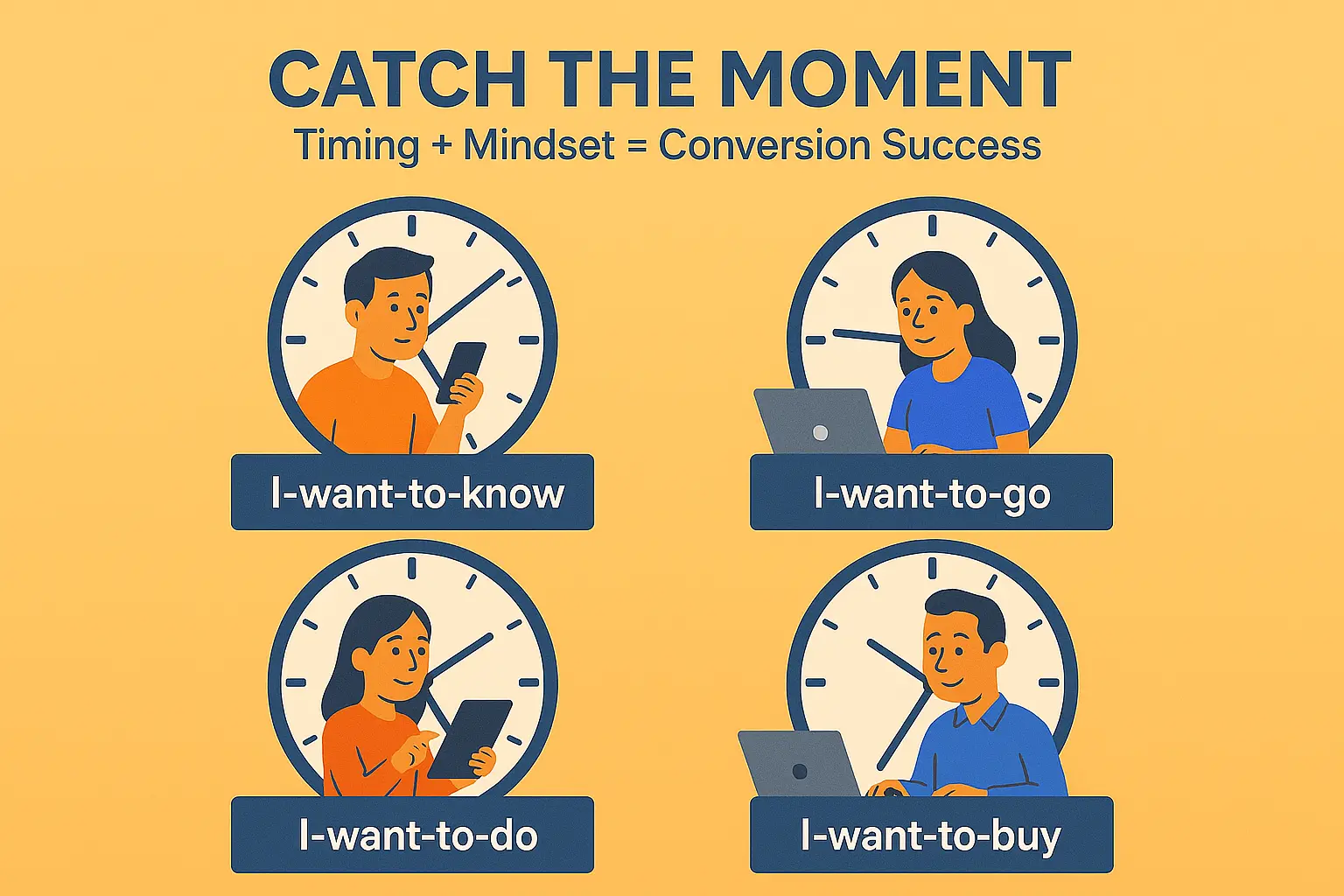
Decision fatigue research indicates that people tend to make progressively worse decisions throughout the day as their mental energy depletes (Princeton University, 2024). This means optimal timing for lead magnet presentation isn’t just about traffic patterns – it’s about psychological readiness.
Understanding Micro-Moments
Micro-moments represent windows of psychological readiness where people are primed to take action. Google research identifies four key micro-moment types: I-want-to-know, I-want-to-go, I-want-to-do, and I-want-to-buy moments (Google, 2024).
The strategy: Match your lead magnet to the specific micro-moment. Someone in an “I-want-to-know” moment responds to educational resources, while “I-want-to-do” moments call for implementation tools.
Psychological readiness indicators:
- Deep engagement with specific content sections
- Multiple page visits within a short timeframe
- Searches for implementation-focused terms
- Return visits after initial content consumption
Environmental Psychology and Conversion
Environmental psychology affects how people perceive and interact with your content. Someone browsing during their lunch break has different psychological availability than someone researching late at night.
Contextual factors that influence decisions:
- Time of day: Morning visitors tend toward productivity tools, evening visitors prefer entertainment or relaxation-focused content
- Device usage: Mobile users want quick, actionable content; desktop users tolerate more comprehensive resources
- Traffic source: Social media visitors expect visual, shareable content; search visitors want detailed solutions
The Psychology of Interruption vs Natural Flow
Interruption psychology varies dramatically by audience and context. Popups that work for e-commerce sites often backfire for educational content because they violate the reading experience.
Natural flow strategies:
- Content-relevant lead magnets embedded within articles
- End-of-post offers that extend the conversation
- Exit-intent triggers that provide additional value
- Scroll-based timing that respects the reading pace
Seasonal psychology also plays a role in how timing affects perceived value. January visitors are focused on improvement and change, whereas December visitors are often distracted by the holidays and year-end pressures.
Measuring and Optimising Based on Psychological Insights
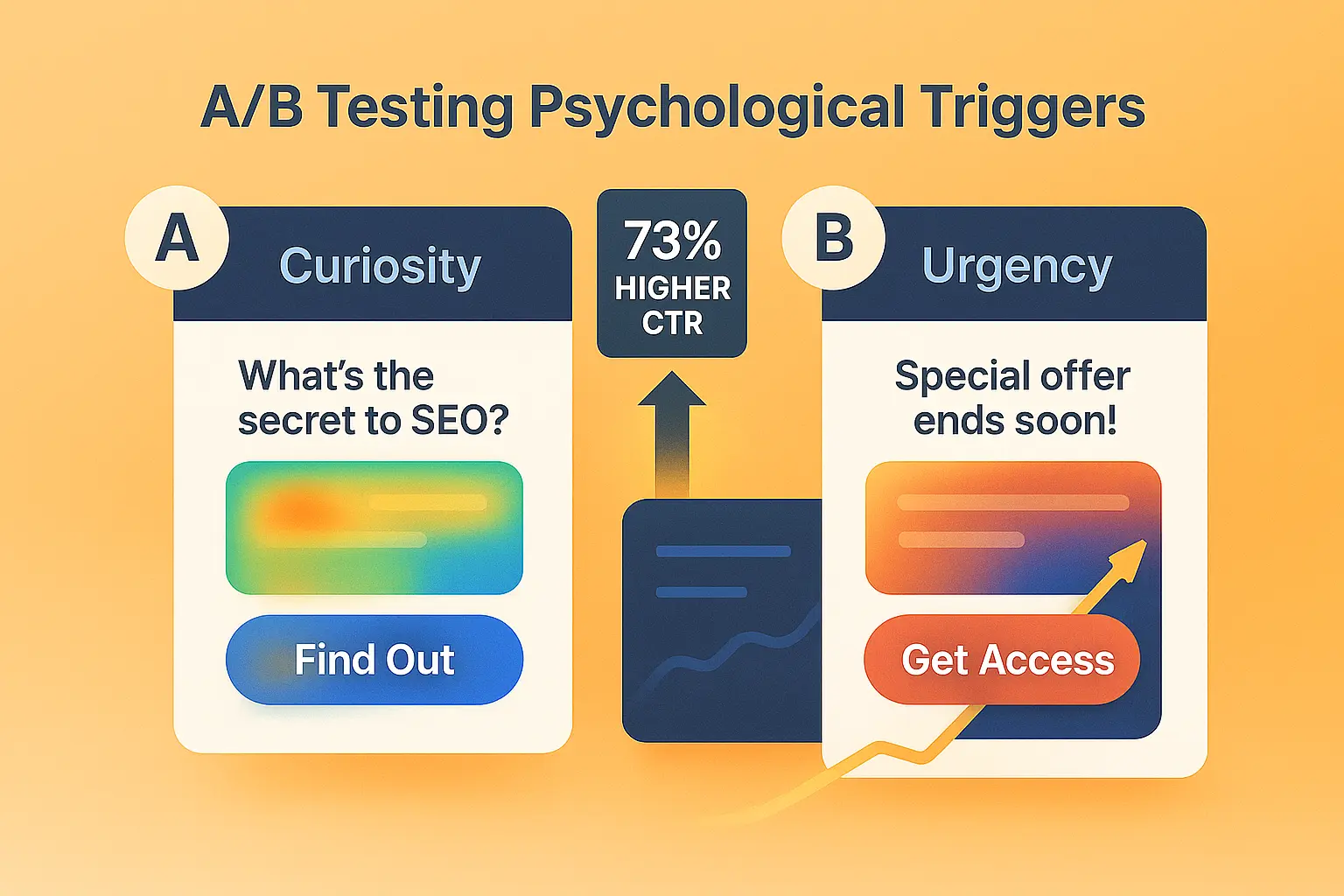
Psychology-driven A/B testing goes far beyond basic conversion metrics. Traditional metrics tell us what people did; psychological indicators in user behaviour analytics help us understand why they did it. This deeper insight transforms random optimisation into strategic psychological targeting.
Advanced Testing Strategies
The breakthrough approach: Test psychological triggers, not just design elements. Instead of testing button colours, test the psychological motivations behind clicking.
Psychological testing frameworks:
- Urgency vs Curiosity: Does your audience respond better to time pressure or knowledge gaps?
- Authority vs Peer Social Proof: Are expert endorsements or user testimonials more persuasive?
- Loss Aversion vs Gain Framing: Does fear of missing out outperform benefit highlighting?
- Immediate vs Future Value: Do quick wins beat long-term transformation promises?
Heat mapping psychology reveals visual attention patterns that indicate psychological engagement. Areas with high attention but low interaction suggest cognitive barriers that need to be addressed.
Behavioural Analytics Insights
Exit-intent psychology provides fascinating insights into the final moments before someone leaves your site. The psychological state during exit intent is unique – it’s often the last chance to provide value that changes their mind.
High-converting exit-intent strategies:
- Address the specific concern that’s causing them to leave
- Offer a reduced-commitment alternative (like a mini-course vs a full program)
- Provide social proof that others initially hesitated, too
- Create urgency around limited availability or time-sensitive bonuses
The data that matters: Track not just conversion rates but engagement depth, return visit patterns, and email sequence performance. These metrics indicate psychological satisfaction and potential for long-term relationships.
Long-term Relationship Psychology
Email sequence psychology reveals that the first few emails sent after an opt-in dramatically influence long-term engagement. Welcome sequences focusing on quick wins generate 73% higher lifetime value than those emphasising future possibilities (Mailchimp, 2024).
Psychological retention strategies:
- Immediate value delivery that reinforces the smart decision
- Progressive revelation of expertise that builds authority
- Community building that creates belonging and social connection
- Consistent value that establishes reliable expectation patterns
The measurement framework: Track psychological engagement through email opens, click patterns, and response rates to value-driven content vs promotional messages.
Conclusion
The key insight: People don’t just want your lead magnet; they want to feel smart, validated, and ahead of the curve. The most successful marketers combine psychological insights with practical implementation, creating lead magnets that feel less like marketing and more like genuine value exchange.
Your action plan:
- Identify which psychological triggers resonate most with your specific audience
- Create lead magnets that speak directly to those deeper motivations
- Test psychological frameworks, not just surface-level design changes
- Measure engagement depth alongside conversion metrics
Start by implementing one psychological principle at a time. Whether it’s leveraging loss aversion in your headlines, using social proof to build credibility, or creating personalised experiences that feel individually relevant, small psychological improvements compound into significant results.
The bottom line: Psychology-driven lead magnets don’t just capture emails – they begin relationships built on genuine value and mutual benefit. Your conversion rates – and your growing email list – will thank you for it!
Start Building Your Lead Magnet Today
Join thousands of marketers using AI to create lead magnets that convert
Start For Free →No Card Required
